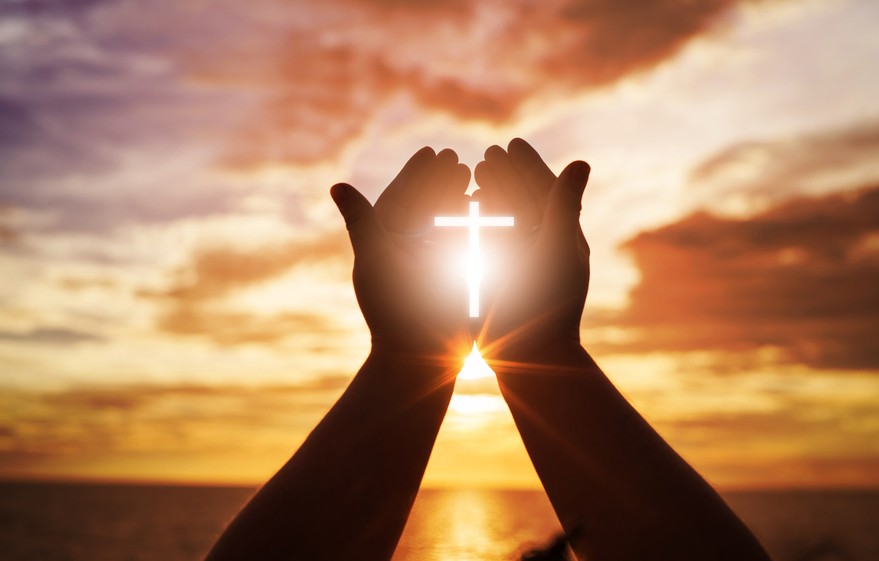
©Joy Dunlap https://joydunlap.com
In the Hermitage Museum in St. Petersburg, my Russian guide and I got into a conversation about faith. In front of the famous painting portraying Abraham and his son Isaac, she questioned how a loving God could ask Abraham to sacrifice his son. I’d been praying for an opportunity to talk with her about my faith, but when that particular door opened, my response (in my mind) was “Really, God? Couldn’t you have given me a better – an easier – question?â€
Truth be told, I’d never really liked that story. It’s heart-wrenching, isn’t it? God asks Abraham to bring his son to sacrifice. What parent would do that? Who would be willing to give up their son or daughter? I cringe whenever I read the passage in Genesis 22: 1-2 NIV.
“Then God said, ‘Take your son – your only son, whom you love – Isaac – and go to the region of Moriah. Sacrifice him there as a burnt offering on a mountain I will show you.’â€
The two vivid artworks by the masterful painter flanked where we sat – the one on our distant left was the “Sacrifice of Isaac,†the one on our immediate right “Return of the Prodigal Son.†For a brief time in that busy museum, we amazingly were the only people in that room with the exquisite Rembrandt paintings. In my mind and heart, I asked God to guide my answer to her question.
I admitted it was a tough story to fathom. The Scripture says God tested Abraham. God wanted to see if Abraham was willing to let his son go, to put his son’s life completely in God’s hands. Did Abraham truly trust God?
God never intended that Abraham would personally sacrifice his beloved son from his union with Sarah – a child God had provided them in an unexplainable way. A miracle child born to a woman well past the age of child-bearing. A “child†whom most Biblical scholars say was a young adult (or older) at the time of the sacrificial request – unlike the boy child often depicted in famous artwork. Isaac even carried the wood up the mountain – reminiscent of the cross Christ would carry on the road to Calvary.
We had walked the streets of St. Petersburg and ridden in hired cars and on the subway as she filled me with historical information about the places we saw. As I got to know my private tour guide, she opened up about growing up in the Communist regime, when churches were turned into museums, skating rinks and community centers, and when youth like her were taught that religion was propaganda. Before services were forbidden, her grandmother had once worshipped in the Russian Orthodox Church; now that public worship was allowed, she had returned. For the most part though, my guide said, her own generation did not go to church – it was not something they felt they needed.
A connection with the church – with the Cross – with Christ – was not something most understood or sought. Yet, there we sat – with her wondering about a loving God and sacrifice.
I explained that Abraham and Isaac’s story is not only about trust and obedience; it’s also a prophecy into the sacrifice that God would ultimately make in His Son Jesus. This vivid depiction is a foretelling of God ultimately taking away the lamb atonement for sin because Christ became the sacrifice – in our place.
“The fire and wood are here,†Isaac said, “but where is the lamb for the burnt offering?†Abraham answered, “God himself will provide the lamb for the burnt offering, my son.†Genesis 22: 7c-8 NIV
In the end of this story in the first chapter of the Bible – as so realistically depicted in Rembrandt’s painting – we see an angel of God halting Abraham’s sacrifice of his son. Then, God provided a ram in Isaac’s place.
We cannot know the mind of God, but we can trust the faithfulness of God.
Abraham ended up blessed with numerous children and the favor of God. God ended up welcoming millions of “adopted†children who came into the family through the door opened by Christ.
When we think about it, we may also see the revelation here that nothing we can personally do can pay the debt for sin. No sacrifice we make. No gift we give. No action we take. God provides the sacrifice — and ultimately that sacrifice was His Son, Jesus the Christ. That is what God wants us to come to understand. His provision. His forgiveness. His mercy.
It is fitting that Rembrandt’s “Sacrifice of Isaac†and “Return of the Prodigal Son†masterpieces were shown together in the Hermitage. One is a father welcoming a wayward son home with feast and finery – and forgiveness. The other is a father willing to sacrifice his beloved son for God — and a God who substituted the sacrifice.
Each point us to our Heavenly Father’s love. Each show us how to live – with trust, with forgiveness, with mercy, and with deep, abiding faith.
Have you experienced the confidence found in trusting God and accepting that Christ’s sacrifice was for you? And, in faith, believe that it didn’t end there – that He is risen – and through Him we understand and experience God’s forgiveness, peace and mercy?
What have you sacrificed to demonstrate your love for someone?
What artwork portraying a Biblical story has moved you?
For God so loved the world that He gave His one and only Son, that whoever believes in Him shall not perish but have eternal life. John 3:16 NIV
Remember…
Life is Better When It’s Full – Joy-full, Thank-full, Purpose-full and Friend-full! ™
https://joydunlap.com
